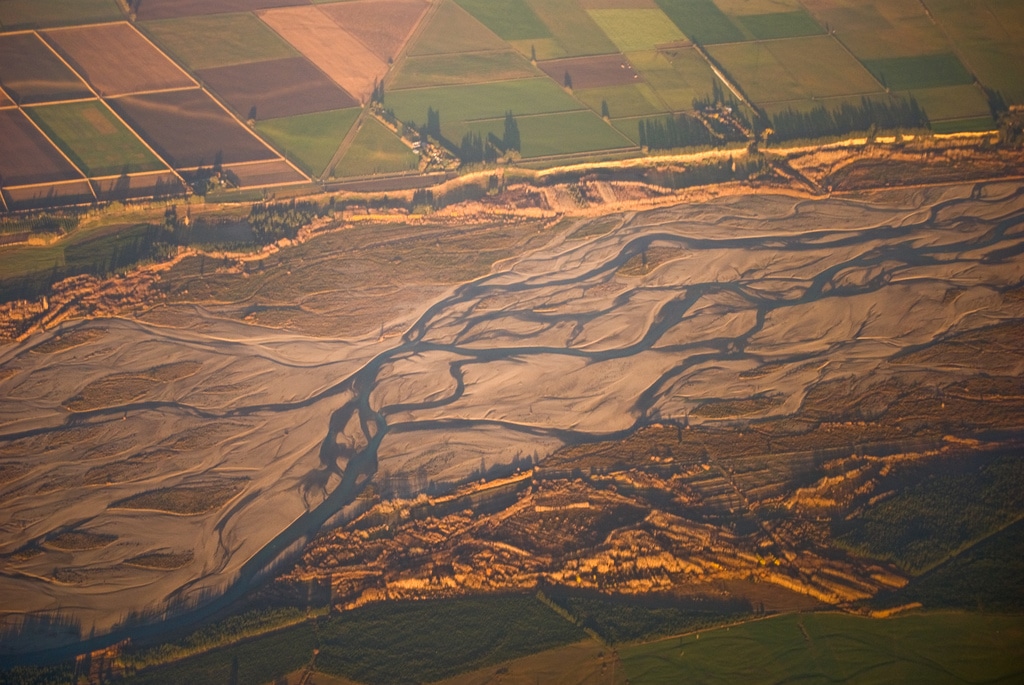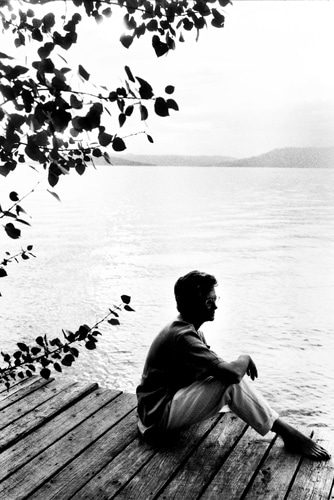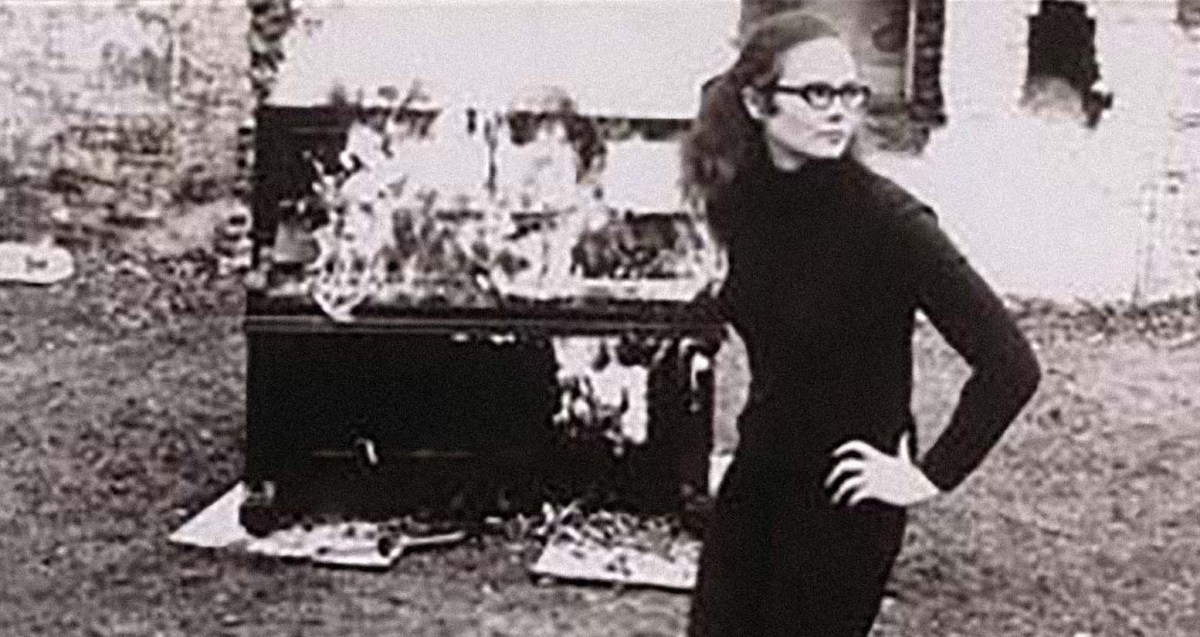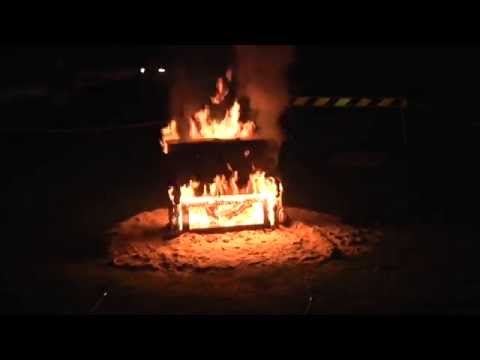The composer Annea Lockwood has been inspired by a lifelong fascination with timbre to record the sounds of rivers across the globe, to incorporate the sounds of the cosmos into her installations, to attach a music box to 20 helium balloons, and to set defunct pianos on fire just to listen to them burn. She has worked with composers, performers, poets, visual artists, and choreographers from Pauline Oliveros to the Merce Cunningham Dance Company, and is also an Emerita Professor at Vassar College. I spoke to Lockwood on the phone while she was in Montana for the summer, and even though I couldn’t see her face, I could hear the smile in her voice as she answered my questions with thoughtfulness and good humor.
VAN: How did you come up with the idea of the burning pianos, and then how did you make the shift from that to other sorts of sounds?
Annea Lockwood: There wasn’t really a shift; it was part of the whole spectrum of my interest in nontraditional sounds. The burning piano originally wasn’t meant to be an event, it was meant to be a recording session. An English choreographer, Richard Alston, and I were thinking of cooking up a dance work called “Heat,” in which we would warm up the auditorium or performance space. I needed to record fire, so I had experimented with my fireplace, and with a bonfire in a courtyard, but none of it quite worked. It didn’t sound hot enough. Then it occurred to me that there was a piano graveyard in London where the garbage disposal people would dump decrepit pianos that people didn’t want anymore. And I thought, “Well, let’s burn a piano.” So we wrapped a mic cable in asbestos, set the mic in a reel-to-reel portable tape recorder, and set the piano on fire with a twist of paper sprinkled with lighter fluid so it would start slowly. All of this stuff is sort of impossible now—the number of permits needed is just astronomical—but in those days that wasn’t the case. I didn’t want a dramatic conflagration; I wanted the sound to develop gradually. And the visuals were just gorgeous. So since then it’s been both a sound and a visual event. And the piece “Heat” never got done of course. That was 1966 or 1967, and around that time I was starting to work with glass, and I was recording environmental sounds, and I’d started the river archive—I was working with sounds from many sources.
Annea Lockwood, “Piano Burning” (1968); from a performance at the University of Western Sydney, 2014.
Is the visual component in the piano transplant series more significant than in the other works, because a piano is a symbol of music-making rather than a part of nature?
I guess it is, yes, because of the piano’s symbolic significance. But when I thought of using a piano, I really—cross my heart—was not thinking, “Okay, female musician symbols, let’s do something with that.” I just figured it would make great sounds, with the sounding board and the strings, so if you’re going to burn something, it might as well make great sounds. It was more of a pragmatic decision.
The other piano transplants which followed—the “Drowning Piano,” which sinks slowly into a pond, and “Southern Exposure,” which is the grand piano that’s anchored on a beach at high tide, and the “Piano Garden”—came out of a love of displacement. I love seeing things in very unexpected contexts. I love incongruities and surrealist conjunctions. I knew they would look beautiful, and I knew they would look really surreal, precisely because of the cultural beauty of the piano as an object.
The latest from VAN, delivered straight to your inbox
Could you explain the genesis of the river maps?
They started with the river archive, which was an absurdity really: it was to be an archive of all the world’s rivers, which is obviously totally impossible. Then in 1982 I went to the Hudson River Museum and made them a proposal to record the river, even though I had never recorded an entire river before. And from the Hudson, I came up with a structure that would include a detailed map of the river indicating all of the sites, as well as the date and time of day, so you could locate the season as well as something of the geophysical context of the particular site. From there I’ve used this structure for the “Sound Map of the Danube” and the “Sound Map of the Housatonic.”
I was very much focused on bringing the sounds and energies of the river itself into the ears of New Yorkers, because I felt strongly that for most New Yorkers, the Hudson is inescapably a visual phenomenon. I wanted to make the physicality of the river more tangible for them.
And I should mention that the “Sound Map of the Danube” is going to be running in San Francisco from November 9 to 18. It’s also running currently in Austria.
How do you grapple with notions of musicality when it comes to sound maps and installations, which could be seen as resisting the idea of the traditional musical work?
Well they seem to me to be very different circumstances—one is appropriate for certain material and the other is appropriate for different material. To use the river as an example: 85 friends of Pauline Oliveros were all invited by McGill University last year to do an 85-second piece for a celebration of what was to be Pauline’s 85th birthday, but of course she died before she reached that birthday. It happened anyway, and it was a really beautiful celebration of her work, with scores and memorabilia and performances. For that I came up with a very different way of thinking about a river. I had a map made of the six bayous which feed into the main bayou that flows through Houston, where she was born, figuring that she had to have known all those bayous. They had to be familiar to a kid growing up in Houston. So there’s a map of all the bayous and there’s instructions on how to read them as a graphic score. So that’s a different take on rivers, but it’s a piece, with a beginning and end. There’s an 85-second version, but I couldn’t resist also making a 20-minute version.
As far as the installations go, what I hope to do with the river sound maps is to draw a listener into what Pauline called “deep listening”—a total physiological and mental immersion into a stream of sound and the details of that sound. You sense yourself not in the river, but at one with the river. No separation.
Why rivers, as opposed to oceans or some other body of water?
I grew up with them in New Zealand, in the southern islands, where there were several wild rivers. Now they’ve all been dammed for hydroelectricity, but when I was kid there were still some wild rivers. My family and I spent a lot of time near the Waimakariri, one of our grand, wild rivers which changed its course from one year to the next. Tracing those changes and watching it make them was totally fascinating, as was its sound. There was also a little hut across a small grassland near a tributary of the Waimakariri, where my brother and I used to sleep at night, and I would go to sleep listening to the sound of the river. I would listen out for kiwis in the bush, but at the same time I’d listen to the river, and it’s just embedded in my sensibility. I love the ocean, but rivers are very intimate.

You just had a world premiere in Jerusalem, could you talk about that a bit for those of us who couldn’t be there?
Yes, “Water and Memory.” That was commissioned for a group called the Holon Scratch Orchestra, along the lines of Cardew’s Scratch Orchestra, a group of non-professional musicians, or maybe even people who don’t think of themselves as musicians. In this case the group turned out to be about a dozen women between the ages of 65 and 82. I’m 77, so it was pretty neat, working with my own age group. I knew that they didn’t have trained voices, so I figured that humming might be something that would be relaxing and wouldn’t put any of them on the spot. It’s such a wonderful sound, a group of people humming, right? And the piece involved a continuo of humming when you walk into the space where it’s being done. They’re already humming, and they form a circle around the audience. The humming evolves into a free performance, within time limits, of words for water, for ocean, for waves, from Hindi, Thai, Hungarian, and Hebrew. They would create waves using these words, and three of them were asked to recount strong memories associated with water. They were just wonderful! The whole community showed up. The last person who recounted a memory asked the audience to join in the humming, and everybody dived in, the whole audience hummed, and it was the greatest sound.

I try to ask every female composer this final question: Do you have any anecdotes or advice for women navigating the sexism in the contemporary music scene?
It’s probably not a bad idea to do what I did for many, many years, which is just to say yes to everything. Any opportunity, any request, any suggestion, any collaboration that came by that I could wrap my mind around, I said yes to, and I kept that up for years. I was never too concerned with forming my own voice. I was always more interested in what I could find that was really a new experience. Just saying yes to everything takes you there.
The other thing is to take risks. Whether it’s diving into working with a medium you have no experience with, or working in a context within which you have no experience, if you think it will pull you out of your comfort zone—that’s a good one. Go out of your comfort zone. Because you won’t die, but it is wonderfully liberating to the mind. ¶
Subscribers keep VAN running!
VAN is proud to be an independent classical music magazine thanks to our subscribers. For just over 10 cents a day, you can enjoy unlimited access to over 875 articles in our archives—and get new ones delivered straight to your inbox each week.
Not ready to commit to a full year?
You can test-drive VAN for one month for the price of a coffee.



Comments are closed.